Every so often I come across a gorgeous book of scientific illustration that I just have to own. There is just something that reaches inside of me to the junction of science nerd, book geek, and appreciator of art and twists. When I saw the cover to Evolution, I knew it was going to be one of those books, and once I flipped it open, I was not disappointed. The book is just full of Patrick Gries’ stark black and white photos of articulated skeletons, restored and posed, and it is a real pleasure for the eyes. You can soak in the strange shapes of sea mammals, the hauntingly familiar skulls of monkeys and the weird adaptations that make flight and gliding possible for a strange range of vertebrates. Jean-Baptiste de Panafieu is an evolutionary biologist, and he provides a concise primer on the hows and whys of evolution, using the images to paint the story of adaptation, convergence and divergence.
Now, I have a weakness for coffee table books. Giant, oversized Taschen books like Andreas Cellarius: Harmonia Macrocosmica or the jumbo Albertus Seba: Cabinet of Natural Curiosities. The sort of things that you need to put on top of the bookshelf, and then they just loom there like the monolith from 2001: A Space Odyssey. That doesn’t mean that those enormous tomes are the only way to scratch that itch, though. The last book to really scratch that itch was Human Anatomy: From the Renaissance to the Digital Age by Rifkin, Ackerman and Folkenberg…or it was, until Evolution.
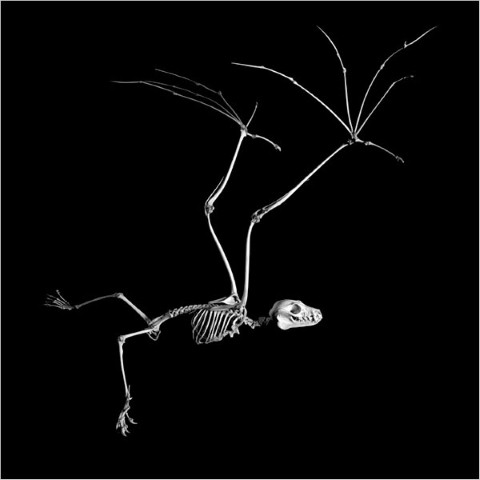
I’m cursorily aware of the debate between anatomical illustration and photography. The tension between the realism of photos and the abstraction of illustration, for one thing: a photo of blood vessels might not be the best tool to explain blood vessels, which seems counter-intuitive until you start to think about how much clarity a good illustration can give, because it isn’t beholden to reality. It can be a Platonic Ideal, so to speak.
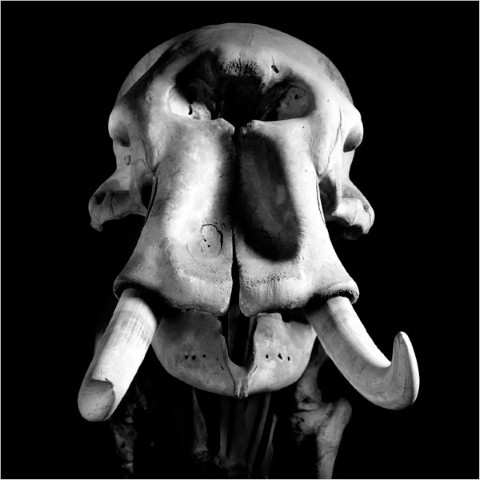
Photography is limited by the subject—there is no such thing as a “perfect specimen”—but it also has…well, the undeniable benefit of being real. (Not to go into too much philosophy of art and representation; “real” is maybe the wrong word to use.) Still, maybe “debate” is a strong word, because this isn’t zero sum; illustrating can be used alongside photography, as a compliment, and vice versa. Or, as we see in Evolution, one style of representation can be elevated to a sublime position, where art and science meet.
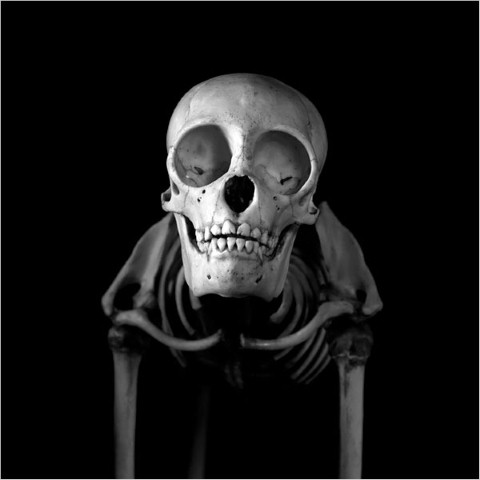
I have a personal history with bones. As I mentioned in my review of How to Think Like a Neandertal, I studied anthropology in college, including forensic and evolutionary, so I’ve had my mitts on a fair share of bones. Human, proto-human, other primates and pig bones, mostly, come to think of it. Now, I admit to being nothing more than a scientific dilettante, but it did shape my relationship to the text.
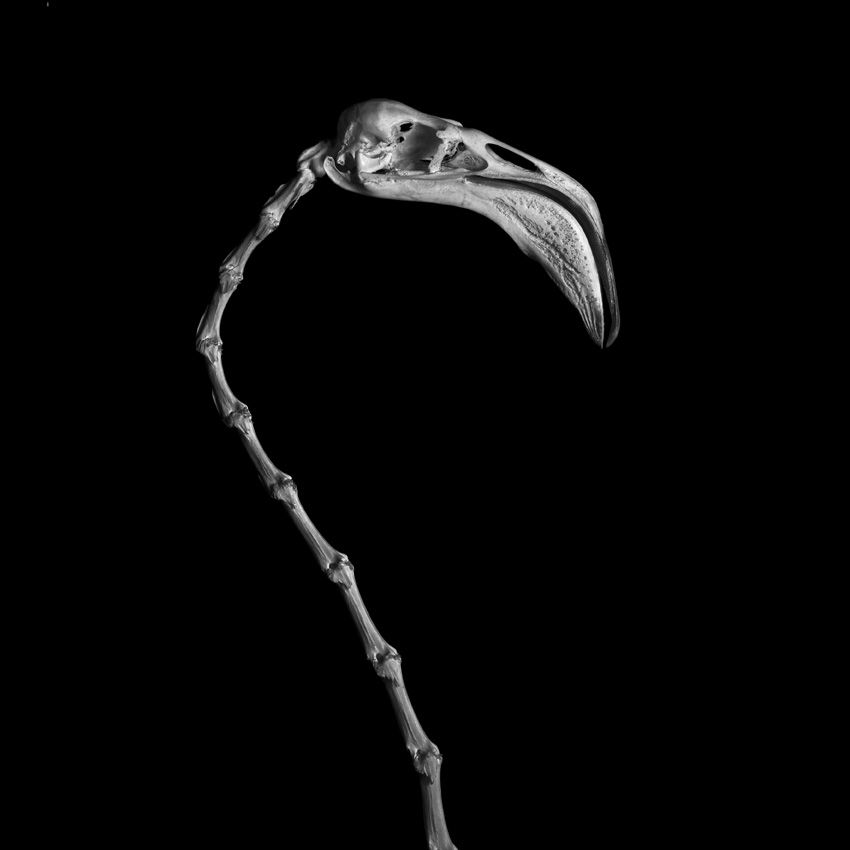
As a primer, Evolution excels, but it isn’t really an advanced guide to the subject of evolution. What that means is that for me, a lot of the text was redundant, but conversely, if you have a beginner or intermediate knowledge of biology, you will find it rewarding. De Panafieu writes in an accessible way about the mechanisms of evolution, along with the common pitfalls and incorrect assumptions people tend to make about how evolution works.

Still, as clear and concise as the writing is, there is no doubt that the star of this book is Gries’ photography. Besides being beautiful, besides the macabre attraction of them, besides the just…memento mori aspect of the book, it is incredible as a explanatory tool. I mentioned the flight and gliding pictures, but the spread of marine mammals, from otters to seal lions to seals to dolphins and whales is another really gripping one. The differences and similarities suggests intuitively a plausible march into the sea for these mammals, without falling into the fallacy of positing an actual phylogenic relationship. How it does that is beyond me, but it is the power of visual storytelling.
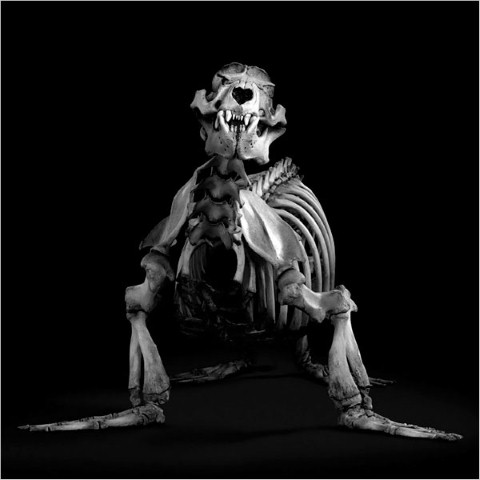
The biggest problem with Evolution? No extinct animals! Come on, nobody goes to the Natural History Museum and skips the dinosaurs! That is just crazy. That aquatic mammal thing I was just talking about? How great would that have been spiced up with some fossils? The march from dinosaurs into birds? Tell me you don’t want to see that! With, you know, the proper disclaimer that evolution isn’t a linear progression or ascent, of course. I think I’m looking at it wrong, though. I don’t think it is a problem with Evolution…but rather an opportunity, for a companion volume. Heck, call it Fossils. Fill it with the same recipe of ingredients as Evolution: smart writing that doesn’t patronize you and killer black and white photos.
Mordicai Knode would also recommend this volume to any aspiring necromancer. I’m sick of seeing badly animated undead skeletons; where is the work ethic in young practitioners of the black arts these days? Speaking of dark magic, there is nothing that rivals Mordicai’s Tumblr and Twitter!










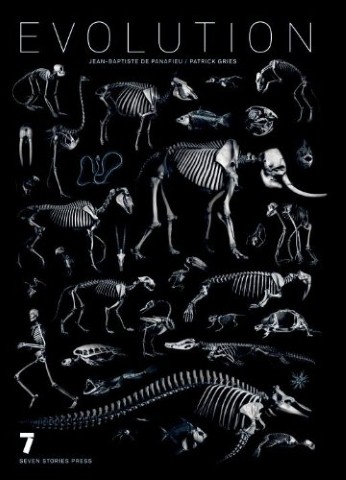
I really would read the heck out of that speculative Fossils book.
The trouble with putting fossil skulls in Evolution, Mordicai, is that so very few fossil skeletons are of comparable quality to just about any preparation of a living form’s skeleton. And a lot are still partially embedded in matrix – they just wouldn’t look as good.
Using modern forms is a nifty way of illustrating another problem faced by neontologists – a lot of things don’t have fossil records, and the sort of evidence presented here is the sort of evidence that we have to use to figure out the evolutionary relationships among living groups.
2. Raskos
I was actually mulling that over– from the preface it sounds like a lot of these skeletons have been de-articulated, cleaned & refurbished, then re-articulated…which might be asking a lot to do to big old bones. That said, I think that you could accomplish something similar using casts or partial casts, right? It might lack some of the scientific integrity, but it would make up for it in dinosaurs.
3. mordicai
Well, yes, dinosaurs. Of course.
You’re right about how much work it is to assemble any skeleton – cleaning off the bones, de-greasing and bleaching them, then assembling them as they were articulated in the living animal – not quick or easy. Even worse with palaeo-type skeletons. But yes, it’s done, and when it is, the results can be pretty spectacular.
4. Raskos
& given how spectacular this work is– it is very pretty– I just want to daydream about something more…ambitious.